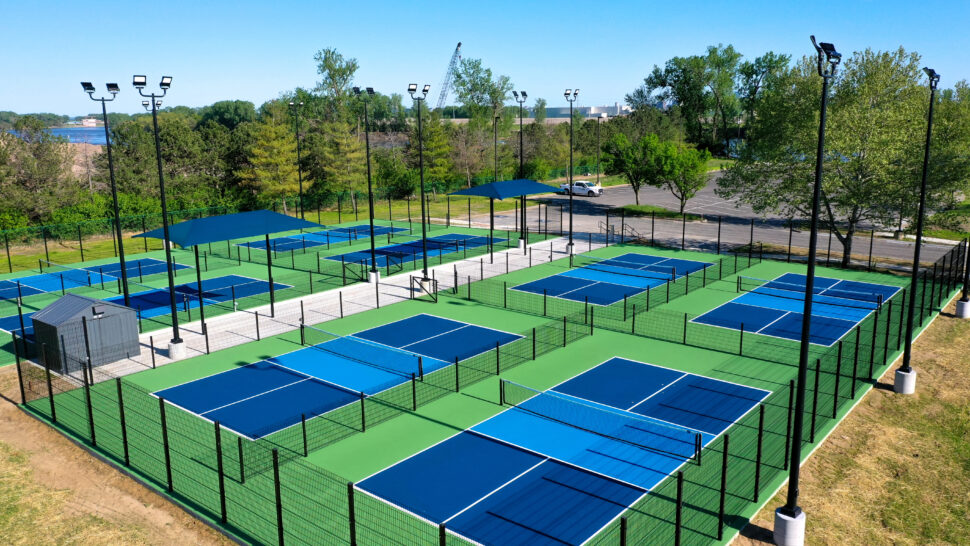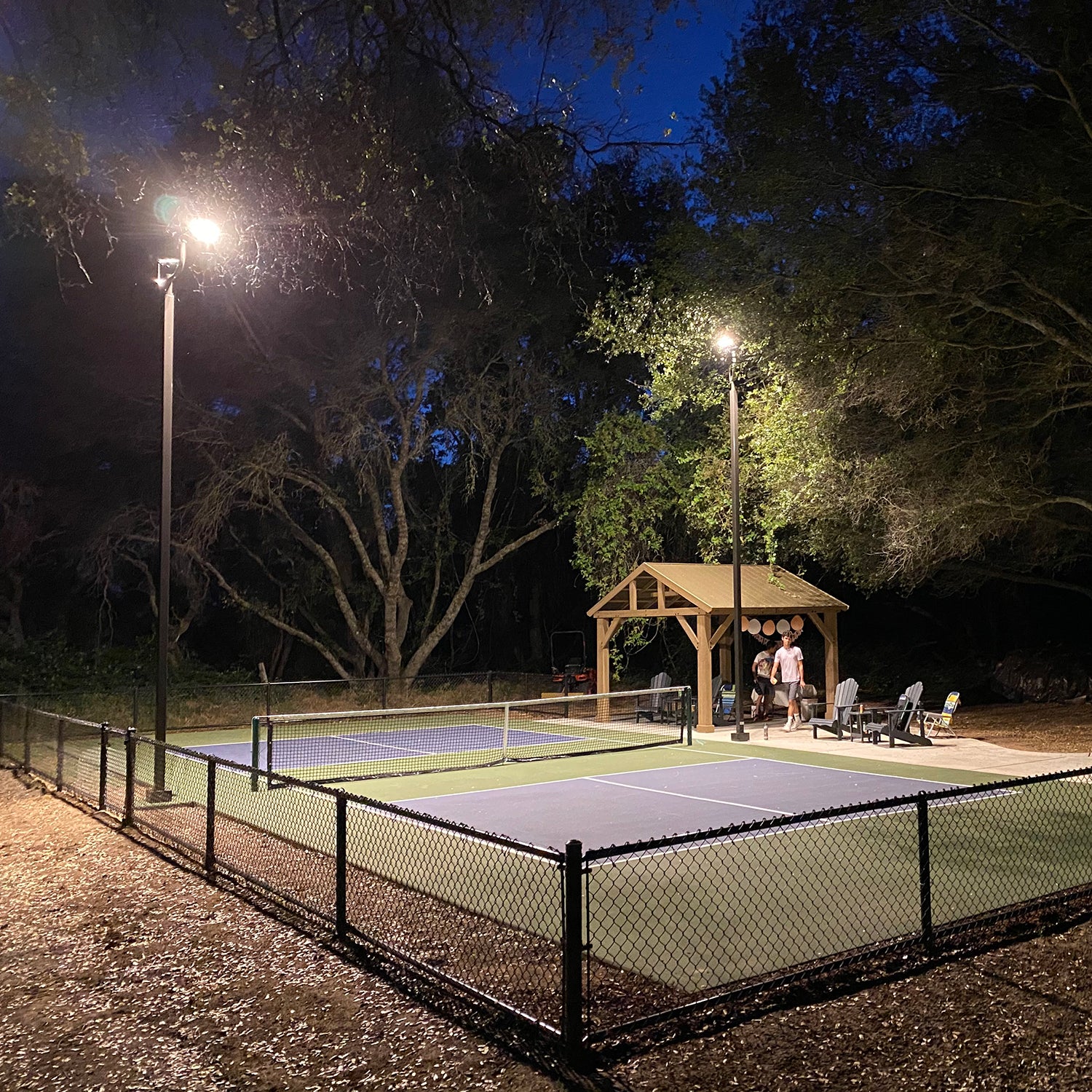Budgeting Tips for Affordable Pickleball Court Construction and Maintenance
Budgeting Tips for Affordable Pickleball Court Construction and Maintenance
Blog Article
Navigating Regulations for Pickleball Court Construction in Your Area
Constructing a pickleball court in your location requires a nuanced understanding of different neighborhood policies, consisting of zoning laws, building authorizations, and security standards. Each municipality enforces specific standards that can significantly influence the feasibility of your job. Engaging with neighborhood authorities and the neighborhood is essential for making certain conformity and fostering support. Browsing this regulative landscape can be taxing and intricate. What are the vital steps you should take into consideration to avoid possible pitfalls and make certain a smooth construction process?
Recognizing Local Zoning Laws
When considering the construction of a pickleball court, comprehending regional zoning laws is important to making certain conformity and preventing potential lawful issues. Zoning policies dictate just how land can be made use of and frequently include specifications related to recreational facilities. These legislations can vary significantly by community, affecting variables such as court placement, dimension, noise, and lighting levels.
Prior to initiating building, it is important to consult the regional zoning board or preparation division to identify the specific guidelines that use to your building. Specific areas may restrict leisure activities, while others might call for particular permits or adherence to specific guidelines. It is additionally crucial to think about problems, which figure out how much frameworks should be from property lines or other structures.
Furthermore, private developments, such as homeowner associations (HOAs), might impose their very own rules concerning the construction and usage of pickleball courts. Comprehending these regulations can avoid expensive modifications or lawsuits down the line. Engaging with neighborhood stakeholders and area participants can provide beneficial insights and foster assistance for your project, making sure that it lines up with the neighborhood's expectations and needs.
Getting Necessary Building Permits
Exactly how does one browse the complexities of getting essential building licenses for a pickleball court? The procedure begins with recognizing local regulations and requirements stated by community authorities. Normally, you will require to submit a comprehensive website strategy that describes the recommended court measurements, materials, and format. This plan must abide with zoning legislations and any details regulations relating to entertainment facilities.

As soon as licenses are gotten, it is crucial to adhere to any assessment schedules and demands throughout the building and construction phase. Keeping interaction with local authorities will certainly promote a smoother approval procedure and help avoid potential obstacles. By completely preparing and comprehending the allowing landscape, you can efficiently navigate the complexities entailed in constructing a pickleball court while remaining compliant with all regional regulations.

Assessing Environmental Influence
An extensive analysis of environmental effect is necessary when preparing the construction of a pickleball court. This assessment aids identify possible results on regional ecosystems, water sources, and area aesthetic appeals. Trick elements to take into consideration include site choice-- guaranteeing that the court is not constructed on ecologically sensitive land, such as marshes or environments for endangered varieties
Dirt stability and drain patterns must be analyzed to stop disintegration and water merging, which could negatively affect bordering greenery and wildlife. Furthermore, the selection of try here products is vital; choosing lasting and eco-friendly choices decreases ecological injury.
The execution of efficient stormwater administration methods is an additional essential aspect, as it aids reduce drainage and sedimentation. Engaging with local environmental companies can provide beneficial insights into regulations and best methods details to your location.
Last but not least, neighborhood input can be useful in understanding any neighborhood ecological problems and fostering assistance for the job. By carrying out a comprehensive environmental influence analysis, stakeholders can make certain that pickleball court building aligns with sustainable practices and contributes favorably to the community's eco-friendly wellness.
Adhering To Safety Criteria
Making sure conformity with safety criteria is important for the successful building and procedure of a pickleball court. Abiding by recognized safety and security look at this site guidelines reduces the danger of injuries and mishaps, guaranteeing a secure setting for players.
Secret security standards consist of appropriate court dimensions, surface area materials, and lighting demands. The court should fulfill the main measurements of 20 feet broad by 44 feet long for increases play, with suitable barrier zones to avoid injuries from wayward spheres. Pickleball court construction. The surface needs to be built from non-slip materials to enhance grip and decrease the likelihood of drops
Additionally, lights has to be ample for evening play, giving uniform illumination to stay clear of darkness that can impede visibility. Local structure codes might also determine specific requirements for fencing and net height to make certain gamer security and protect against unapproved accessibility to the court location.
Regular evaluations and maintenance are vital to copyright these criteria gradually. By prioritizing safety and security conformity, court owners not just secure players but likewise foster a favorable track record within the neighborhood. This dedication to security can motivate greater involvement and enjoyment of the sporting activity, inevitably adding to its growth and sustainability.

Engaging the Neighborhood in Preparation
Community participation in the drawing board of pickleball court construction can dramatically improve the project's overall success. Involving local citizens and stakeholders cultivates a feeling of ownership and urges collective decision-making, which can cause broader support for the effort.
To successfully involve the area, coordinators must initiate public meetings or workshops, giving a platform for citizens to articulate their opinions and choices regarding place, layout, and features. Studies and feedback kinds can likewise be made use of to collect insights from a broader audience, making certain that varied perspectives are thought about.
In addition, forming an area consultatory board can facilitate ongoing conversations and address issues throughout the planning process. This board can include reps from different demographics, such as neighborhood institutions, leisure organizations, and neighborhood read review watch, thereby amplifying area representation.
Effective communication is essential; updates concerning the job should be consistently shared through e-newsletters, social media sites, or neighborhood notices. By prioritizing area interaction, planners can cultivate excitement, minimize prospective opposition, and develop a pickleball center that absolutely reverberates with local values and demands. This joint approach not just improves the task however also reinforces community connections.
Final Thought
Finally, navigating the intricacies of pickleball court construction necessitates a thorough understanding of neighborhood regulations, including zoning laws, building licenses, and safety criteria. Carrying out ecological assessments is necessary to alleviate ecological influence, while neighborhood engagement can improve assistance for such projects. By adhering to these guidelines and fostering partnership, successful execution of pickleball courts can be achieved, advertising leisure chances and neighborhood wellness. Continued diligence in these areas will guarantee sustainable and certified development.
Constructing a pickleball court in your location needs a nuanced understanding of different neighborhood regulations, including zoning regulations, structure licenses, and safety and security standards.When taking into consideration the building and construction of a pickleball court, recognizing local zoning regulations is essential to making sure compliance and preventing possible legal issues. By extensively preparing and comprehending the permitting landscape, you can effectively browse the intricacies involved in building a pickleball court while staying certified with all local policies.
In conclusion, navigating the intricacies of pickleball court construction demands a detailed understanding of neighborhood regulations, including zoning laws, building authorizations, and safety criteria. By sticking to these guidelines and cultivating cooperation, effective execution of pickleball courts can be accomplished, promoting leisure opportunities and community well-being.
Report this page